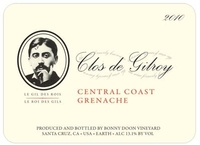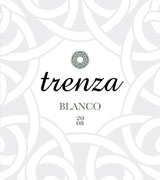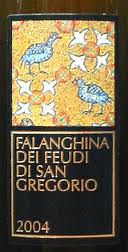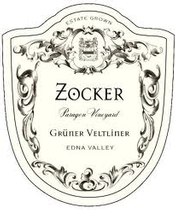
They say hindsight is 20-20. Let’s hope so. After 20 years of penning this column, I’ve filed at least 20 columns for various publications with recommendations for the Thanksgiving feast.
As you might imagine, the challenge every year is to produce a new approach to a traditional holiday in which the variables are actually constants. Most traditional Thanksgiving dinners will feature turkey, and it doesn’t really matter all that much that some will roast it, others will deep-fat fry it and some will even use the grill.
I would tell you the same no matter: The bird is versatile — either red wines or white wines are perfectly acceptable, and I tend to shy away from reds that are heavy or exhibit aggressive tannins. Given that the typical traditional Thanksgiving dinner is well attended by family and friends, cost could be something to factor in. And the nature of the feast, which mixes sweet and savory dishes side by side, allows for wines that are fruity or slightly sweet, as long as they are well balanced.
So this year I’ve decided to do a 20-20 Thanksgiving. That is to say, I have looked back through my tasting notes from the past year and picked out wines that I believe are well suited for the Thanksgiving task. And to further promote the 20-20 theme, I’ve chosen 20 wines that retail for $20 or less.
Let the feasting begin.
 Trenza 2009 ‘Blanco,’ Edna Valley, ($20) — Trenza’s ‘Blanco’ is a shining example of the potential for unusual grape varieties to do well in many of California’s cool, coastal appellations. The grapes are unusual only in the sense that traditionally they have not been widely planted, if planted at all, in this country. This is a 50-50 blend of albarino (the delicious white from the Rias Baixas district of Galicia in western Spain) and grenache blanc, a staple of the white wines of the southern Rhone Valley of France. The albarino provides the zing, the grenache blanc the heft. It’s a lovely combo that shows aromas of red citrus, such as tangerine, and crisp pear. There is a flinty, edgy minerality throughout. I absolutely loved it. Rating: 94.
Trenza 2009 ‘Blanco,’ Edna Valley, ($20) — Trenza’s ‘Blanco’ is a shining example of the potential for unusual grape varieties to do well in many of California’s cool, coastal appellations. The grapes are unusual only in the sense that traditionally they have not been widely planted, if planted at all, in this country. This is a 50-50 blend of albarino (the delicious white from the Rias Baixas district of Galicia in western Spain) and grenache blanc, a staple of the white wines of the southern Rhone Valley of France. The albarino provides the zing, the grenache blanc the heft. It’s a lovely combo that shows aromas of red citrus, such as tangerine, and crisp pear. There is a flinty, edgy minerality throughout. I absolutely loved it. Rating: 94.
Quivira 2010 Sauvignon Blanc, Fig Tree Vineyard, Dry Creek Valley ($18) — I was once a staunch admirer of the Quivira wines, but went off the reservation when the wines started to push the alcohol levels beyond my level of tolerance. So it was a joy to taste a Quivira wine I could love again, and that would be this sensational sauvignon from the 2010 vintage. The nose is inviting ripe figs and red citrus, flavors that are delivered on the palate. Well balanced and fresh, the palate shows a hint of richness that creates a lovely harmony with the underlying acidity. Rating: 93.
 Feudi di San Gregorio 2009 Falanghina, Campania, Italy ($15) — The whites from this part of southern Italy are prized for their earthy minerality, rich viscosity and balancing acid. These characteristics would seem incompatible with the hot climate, but that is the miracle of Campania. Greco di Tufo and Fiano di Avellino are well regarded and among the most important white wines in all of Italy. Falanghina doesn’t enjoy such a lofty reputation, but its popularity is surging, no doubt because of the price differential. When it comes to quality and pleasure of drinking, however, there isn’t such a huge difference. The ’09 from Feudi di San Gregorio exhibits lush tropical fruits, a refreshing undercurrent of citrus and green apple, with a hint of honey and white flower on the finish. Rating: 93.
Feudi di San Gregorio 2009 Falanghina, Campania, Italy ($15) — The whites from this part of southern Italy are prized for their earthy minerality, rich viscosity and balancing acid. These characteristics would seem incompatible with the hot climate, but that is the miracle of Campania. Greco di Tufo and Fiano di Avellino are well regarded and among the most important white wines in all of Italy. Falanghina doesn’t enjoy such a lofty reputation, but its popularity is surging, no doubt because of the price differential. When it comes to quality and pleasure of drinking, however, there isn’t such a huge difference. The ’09 from Feudi di San Gregorio exhibits lush tropical fruits, a refreshing undercurrent of citrus and green apple, with a hint of honey and white flower on the finish. Rating: 93.
Tangent 2009 Albarino, Paragon Vineyard, Edna Valley ($17) — The early albarino efforts from Tangent were certainly plausible expressions of the grape, but recently the program seems to have found another gear. Albarino, originally grown in the cool, wet region of Rias Baixas in northwest Spain, seems to be thriving in the cool, coastal vineyards of the Edna Valley, where the Paragon vineyard is situated. This vintage offers aromas of green and red citrus, with notes of tangerine and lime, as well as a hint of the minerality that inspires so many fans of albarino. Rating: 91.
Eberle Winer 2010 Muscat Canelli, Paso Robles ($14) — Don’t be put off by the fact that this refreshing white has a bit of residual sugar and is described by the winemaker as “semi-sweet.” There is a place for it at the dinner table, or even as an aperitif on a warm summer day. Muscat made in the style of the Eberle Muscat Canelli is light and refreshing, well balanced,and a perfect foil for desserts that aren’t too sweet, or those that are fruit-based. The flavors and aromas show hints of floral, citrus, ripe melons and spice. Rating: 91.
 Zocker 2010 Gruner Veltliner, Paragon Vineyard, Edna Valley ($18) — Winemaker Christian Roguenant is a native of Burgundy and well regarded for his work in California with pinot noir and chardonnay. Less well known are his accomplishments with crisp white wines such as albarino and this gruner veltliner. Gruner, a steely white grape more typically seen in Austria, is relatively new to California viticulture. Zocker’s is planted in the cool Edna Valley, near San Luis Obispo on California’s Central Coast, within spitting distance of the Pacific Ocean. It is bone dry and minerally, with firm acidity and subtle hints of citrus fruits and tart apples. Rating: 91.
Zocker 2010 Gruner Veltliner, Paragon Vineyard, Edna Valley ($18) — Winemaker Christian Roguenant is a native of Burgundy and well regarded for his work in California with pinot noir and chardonnay. Less well known are his accomplishments with crisp white wines such as albarino and this gruner veltliner. Gruner, a steely white grape more typically seen in Austria, is relatively new to California viticulture. Zocker’s is planted in the cool Edna Valley, near San Luis Obispo on California’s Central Coast, within spitting distance of the Pacific Ocean. It is bone dry and minerally, with firm acidity and subtle hints of citrus fruits and tart apples. Rating: 91.
Clos de Gilroy 2910 Grenache, Central Coast ($18) — The great red wines of the southern Rhone, particularly Chateauneuf-du-Pape and Gigondas, owe a good deal of their charm and appeal to the less-well-known grenache grape. In this his latest Clos de Gilroy Grenache, winemaker Randall Grahm captures the very essence of grenache, the succulent red-fruited aromas laced with minerality, the juicy palate, the hints of freshly ground black pepper, and the lip-smacking length and finish you will find in so many of the better wines of the southern Rhone. Rating: 90.
Skalli 2009 Cotes-du-Rhone ‘Les Rabassieres’, France ($15) — The problem, really the only problem, with Cotes-du-Rhone is that it can be anything. Skalli’s Les Rabassieres resides in the upper echelon, where the wines have more substance. It is heavy on grenache at 60 percent, with the remainder of the blend given to syrah and Mourvedre. This was a superb vintage in the Rhone Valley, with a late-summer heat wave that pushed the grapes to full ripeness heading into the tricky fall weeks of harvest. The wine exhibits lovely aromas of sweet red fruits such as raspberry, currant and strawberry, with a hint of spice, and savory notes of dried herbs and garrigue. It is full and supple in the mouth, with sweet, smooth tannins and good balance despite palate weight that might surprise. Rating: 90.
 Calera 2010 Chardonnay, Central Coast ($18) — Winemaker Josh Jensen has been at this for quite some time (the label says this is the 35th anniversary vintage) and no doubt has reliably outstanding sources for the grapes that don’t grow on his Mt. Harlan estate. How else to explain the remarkably (and consistently) high quality of Calera’s “Central Coast” chardonnay? This vintage has a little something for everyone, with a creamy palate, lovely aromas of lemon custard and ripe pear, and a long, lingering finish that begs another sip. Rating: 90.
Calera 2010 Chardonnay, Central Coast ($18) — Winemaker Josh Jensen has been at this for quite some time (the label says this is the 35th anniversary vintage) and no doubt has reliably outstanding sources for the grapes that don’t grow on his Mt. Harlan estate. How else to explain the remarkably (and consistently) high quality of Calera’s “Central Coast” chardonnay? This vintage has a little something for everyone, with a creamy palate, lovely aromas of lemon custard and ripe pear, and a long, lingering finish that begs another sip. Rating: 90.
Rodney Strong Vineyards 2009 Chardonnay, Estate, Chalk Hill ($20) — For the price, the Chalk Hill Estate from Rodney Strong is likely one of the finest California chardonnays money can buy. When tasted recently, it was showing bright acidity with notes of citrus and pear fruit. Winemaker Rick Sayre descibed it as “tightly wound” because, I surmised, it seems austere when tasted beside the winery’s Reserve Chardonnay. The trajectory is good, however, and I am certain this wine will soften and its depth and fruit complexity will emerge after another six to nine months in the bottle. Rating: 90.
Dry Creek Vineyard 2010 Sauvignon Blanc ‘Fume Blanc’, Sonoma County ($12) — Yes, indeed, Dry Creek Vineyard does sauvignon blanc, and very well at that. Winery founder David Stare made sure of that long before anyone thought sauvignon was a viable commercial grape in California. So DCV had a passion for sauvignon then, and still does. The basic 2010 Fume Blanc (100 percent Sauvignon) is a classic, exhibiting intense aromas of lemongrass and dried herbs, passionfruit and grapefuit, with exquisite balance, modest alcohol (13.5 percent) and a lingering finish. Rating: 90.
Tapena 2009 Garnacha, Tierra de Castilla, Spain ($10) — This grape variety is more widely known as grenache when grown in France and other parts of the world. No matter how you say it, delicious is the most obvious descriptor for this particular wine. This vintage of Tapena Garnacha exhibits lush red-fruited aromas and supple tannins, making this an inviting and easy-to-drink red built for immediate enjoyment, no additional cellaring needed. Rating: 90.
Li Veli 2007 Salice Salentino, ‘Pezzo Morgana’, Puglia, Italy ($20) — The premier wine grape of Puglia is negroamaro, and Li Veli’s Pezzo Morgana Salice Salentino is 100 percent negroamaro from the Li Veli estate. The ’07 is a robust wine that delivers rich aromas of plum and cherry, with an oily texture on the palate that is typical of reds from this region. The tannins are nicely integrated, but exhibit a sneaky grip on the finish. Serve it with grilled red meats. Rating: 90.
Coltibuono 2009’RS’ Chianti Classico, Tuscany, Italy ($15) — Coltibuono has a long tradition of exceptional quality at a fair price, and it’s Chianti Classico RS is a good example. It’s supple and fresh, with loads of bright red fruit, firm acid, and good weight and length on the palate. It shows plenty of sophistication and finesse for a wine that is meant to be consumed young, and it’s definitely food friendly. Rating: 89.
Alta Luna 2009 Vigneti delle Dolomiti IGT ‘Phases’, Trentino, Italy ($14) — Phases is an eclectic blend of two native grape varieties — teroldego and lagrein — with merlot. Because of the cool climate in the foothills of the Alps, the native grape varieties can sometimes fail to ripen fully, producing lackluster reds at best. The early ripening merlot grape is a clever safeguard against a poor vintage. The ’09 Phases hits on all cylinders, though, exhibiting the red-fruited characteristics of the native grapes and the darker fruit aromas of merlot. The wine is nicely structured, with smooth tannins and firm acidity. Rating: 88.
Franciscan 2009 Sauvignon Blanc, Napa Valley ($17) —This is a largely tank-fermented sauvignon that delivers aromas of grapefruit, lime and passionfruit typical of cooler climates, so that leads me to believe the vineyard sources are either located in the southern Napa Valley or on the cooler western side of the valley, where the vineyards are often shaded from the afternoon sun. That would also explain the pleasing mineral note that I find attractive. Rating: 88.
Vina Zaco 2008 Tempranillo, Rioja, Spain ($15) — This is a decidedly bright, fresh, modern Rioja from one of the oldest, most important areas of the district. Vina Zaco is from Bodegas Bilbainas, which has several hundred acres in and around the village of Haro in the Rioja Alta, which is where the business of Rioja wine firmly established itself more than 100 years ago. This is a fruit-forward red that fairly shouts “raspberries” as it is being poured into the glass. It’s fresh and vibrant, with a hint of spice from the nine months of barrique aging prior to bottling. Rating: 88.
Torres 2010 ‘Vina Esmeralda’, Catalonia, Spain ($15) — A blend of moscatel and gewurztraminer, Torres’ Vina Esmeralda is a fresh breeze on a warm Mediterranean day. The nose is scented with honeysuckle and rose petal, followed by flavors of tropical fruit and spice. Not only is it refreshing, it’s low alcohol, too, at 11.5 percent. Rating: 88.
Clayhouse 2010 ‘Adobe Pink,’ Central Coast ($14) — The first obligation of a rose wine is to refresh. Check. The second is to show plenty of fruit without going to the bubblegum side of the flavor spectrum. Check. It shows pretty aromas of strawberry and spice, with hints of dried herbs. The blend is Mourvedre, syrah and cabernet, and the bottom line is that it’s delicious, inexpensive and refreshing. Rating: 87.
Cancelli 2009 Rosso di Toscana IGT, Italy ($10) — This blend of sangiovese and syrah is unusual for Tuscany, especially in the Chianti Classico district where the mother winery, Coltibuono, is located, but it works, and that’s all that really matters.. Aromas of cherry and spice are pure sangiovese, as is the firm acid structure. The syrah lends a note of blueberry. Cancelli is fermented in stainless steel and aged in the bottle, so it never sees the inside of a barrel. It is fresh, clean and fruity. Rating: 87.
8
